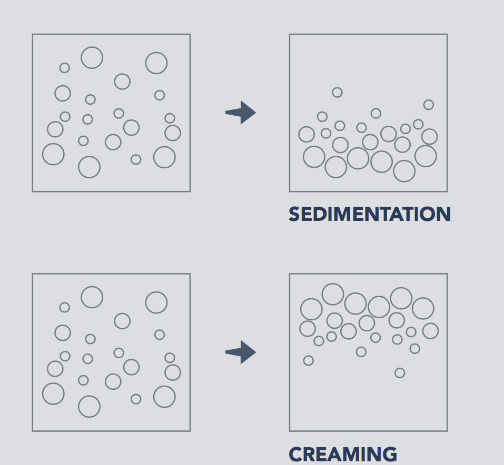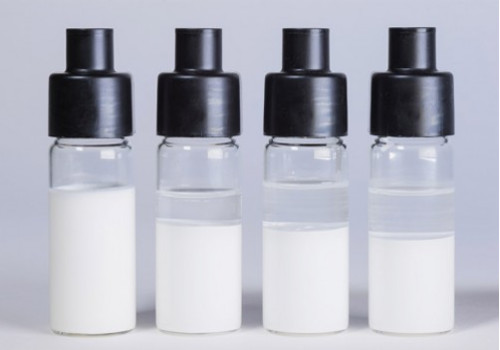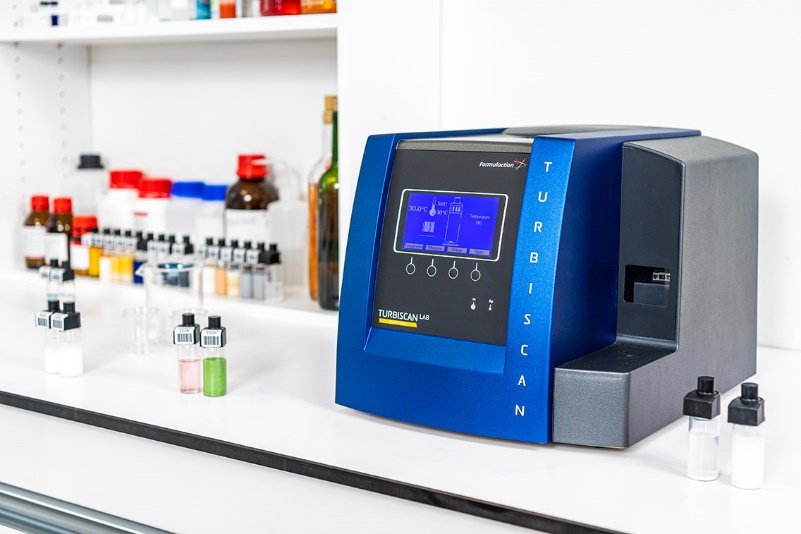categories
recent posts
In the coating industry, the sedimentation of pigments and fillers has a significant impact on the properties of coatings at the point of use. Being able to accurately characterize sedimentation is crucial to the development of shelf-stable coatings – yet the majority of sedimentation testing is still carried out by visual inspection. In this article, we take a look at the fundamentals of sedimentation, why sedimentation is important in the coating industry, and how stability analyzers enable accurate optimization of coating formulations.1
FUNDAMENTALS OF SEDIMENTATION

Sedimentation is the process by which solid particles, initially suspended in a liquid phase, settle to the bottom of a container over time. Sedimentation fundamentally occurs because of a difference in density between the two phases. Relatively dense solid particles will naturally sink to the bottom of a less-dense fluid for the same reasons that a stone will sink to the bottom of a lake, or that airborne dust will eventually settle to the ground.
A basic description of sedimentation is given by Stokes’ Law, which considers spherical particles falling through a simple fluid. Stokes’ Law yields an equation for the speed v at which a solid particle will fall out of suspension:
v=(Δρ_p gd^2)/18η
In this equation, Δρ_p is the difference between the densities of the solid and liquid phases, g is the strength of gravity, d is the diameter of the particle in question and η is the viscosity of the liquid phase. This mathematical treatment tells us that sedimentation rate depends on particle size, viscosity of the liquid phase, and the difference in density between the solid and liquid phases: a stone sinks quickly in water, while construction dust can take minutes or hours to settle depending on particle size.2
It is important to remember, though, that this model is just a first-order approximation.3 Sedimentation in paints, coatings, and other real-world products is much more complex, typically involving particles of distributed sizes and shapes falling through complex fluids with visco-elastic properties.
SEDIMENTATION IN COATINGS
The importance of sedimentation varies in different industrial products. In the coatings industry, pigments (non-soluble colorants) and fillers (functional additives) are prone to sedimentation, rendering them practically unusable.
On the plus side, sedimentation is often reversible, which means that solid particles can sometimes be redispersed after they’ve settled. For certain products, this is no problem – many medicines, drinks, and other household products simply instruct the user to “shake well before use.” This is enough to fully redisperse solid material without any significant inconvenience to the end-user.

However, in many coatings and other products, inter-particle bonding means that settled particles can sometimes form a hard or rubbery sediment that can’t be redispersed. Even when redispersion is possible, coatings and paints generally require relatively high energy input to achieve this (mechanical stirring, for example).
Sedimentation can be minimized by decreasing the difference in density between solid and liquid phases, decreasing particle size and increasing the viscosity of the liquid phase. Coatings commonly make use of rheology additives, too, which form 3D networks to support pigments and fillers and prevent them from falling out of suspension. Therefore, controlling sedimentation and redispersion characteristics essential to the production of high-quality coatings.
CHARACTERIZING SEDIMENTATION
In order to limit sedimentation effectively and produce stable products, manufacturers need to be able to accurately characterize these behaviors during product development and manufacturing.
Visual inspection remains the most common method of sedimentation testing in industry. Undoubtedly easy to implement, visual testing also requires virtually no capital expenditure – however, such methods are invariably subject to guesswork and inaccuracy. As well as being imprecise, the process can also be time-consuming since any variations must be visible to the eye to be detectable.

tags :
the professional team to service !